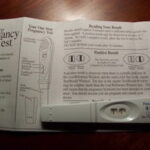Pregnancy can be scary, especially during your last few weeks. It is very important to know what the pre-labor, false labor, and real labor symptoms are so that you can determine when it is “really” time to go to the hospital. This article will discuss the three types of symptoms and how to know when you need to pack up and go or when you need to just sit back and relax.
Pre-Labor Symptoms
Pre-Labor symptoms can start surprisingly a full month or more before actual labor, or only an hour before real labor. Pre-labor is actually the beginning stages of cervical effacement and dilation. Usually when you start having weekly check ups with your doctor, they may check to see if you are dilated or not. Sometimes a woman may be dilated 2 or 3 centimeters for a few weeks, a few days, or a few hours. So when you start to become dilated that means you have reached your pre-labor stage. There are other signs of pre-labor that we will now discuss.
Lightening and Engagement
Around two to four weeks before actual labor, first-time mothers will experience the baby starting its’ descention down into the pelvis. This does not usually occur in second or later births until the real labor has started.
Sensations of Increasing Pressure in the Pelvis and Rectum
A pain in the groin or a sharp pain in the back also lets you know that you are in the pre-labor stage. The baby is now pressing on sensitive nerves, and trust me you can feel them. You may get a shooting pain down your leg that can stop you dead in your tracks. Sometimes moving the baby around or trying to get pressure off of the nerves can help ease the pain.
Loss of Weight or Cessation of Weight Gain
Weight gain usually slows down in the ninth month so do not be alarmed. Some women can lose up to 3 pounds during the time right before labor. Just know that these are normal pre-labor symptoms.
A Change in Energy Levels
Nesting” is very common among women ready to give birth. This burst of energy can have you scrubbing the walls, detecting any and every piece of dirt in the house, and vacuuming like crazy. This is a mother’s way of getting the nest ready for the new baby. So know that increased levels of energy can happen and so can loss of energy. Some women feel fatigued and tired during the pre-labor stage. Whatever way you feel, know that it is normal.
A Change in Vaginal Discharge
Your discharge may increase and may become very thick. Don’t be alarmed because this is normal.
Loss of Mucous Plug
The mucous that plugs of the opening of the uterus will fall out. This may come out a week or two before real labor begins. It is a thick bloody like substance that will probably come out when you go to the rest room. Once again, do not be alarmed. This happens because the cervix is beginning to thin and open up.
Pink, or Bloody Show
Sometimes capillaries rupture when the cervix is opening and thinning, so there may be little droplets of blood when you urinate or in your underwear. This usually means that labor will begin within the next 24 hours; however, it is possible that you may have to wait a few more days.
Intensification of Braxton Hicks Contractions
You may get Braxton Hicks more often, stronger, longer, and maybe even more painful. Breathe them through, you will know when it is time for real labor; trust me.
Diarrhea
Some women get diarrhea when it is almost time to go into labor.
False Labor Symptoms
This is very important to understand because you will waist your car’s gas if you keep running back and forth to the hospital due to false labor pains. The doctor will not hesitate to send you right back home until actual labor begins. Some women become so excited and they think that the smallest inkling of pain is labor, so they rush to see the doctor and he tells them to leave. So we will definitely discuss when you should “not” go to the hospital.
1. If your contractions are not regular and do not increase in severity or frequency.
2. Pains in your lower abdomen and not in your back.
3. Contractions stop if you begin walking around or change your position.
4. If you have brownish show. This may be due to having sexual intercourse or an internal exam from your doctor within the past 48 hours.
5. Fetal movements become greater with contractions. If the activity becomes frantic you need to consult your physician immediately.
Real Labor Pains
Now we are on to the real deal. You have probably gone through most if not all of the pre-labor and or false-labor symptoms and now you know that it is the real thing. You will definitely know when you feel the first, second, and third contraction that you are in “real” labor. We will now discuss the symptoms of real labor.
1. If your contractions become greater, will not ease up, will not feel better with walking or change of position.
2. If the pain starts in the lower back and spreads to the lower abdomen. It can also spread to the legs.
3. Your contractions are happening precisely the same minutes apart in the beginning (i.e. every 10 minutes). These contractions are very painful and they will start to come more frequently with more intensity.
4. Show is present and you have pinkish blood streaks.
5. Your water breaks. This can come in a leak, (like a leaky water-balloon) or a sudden gush.
If you have any of these signs, it is time to call the doctor. It doesn’t matter if it is day or night, what you are doing, or where you are. It is time to start your route to the hospital if the doctor tells you to come in. Do not wait around, hoping that the contractions will stop. If you are in real labor jump in the car or call the ambulance, just get to the hospital soon.
I hope that God willing this article will help you.
Reference:
- What to Expect When You’re Expecting by Arlene Eisenberg, Heidi E. Murkoff, and Sandee E. Hathaway




